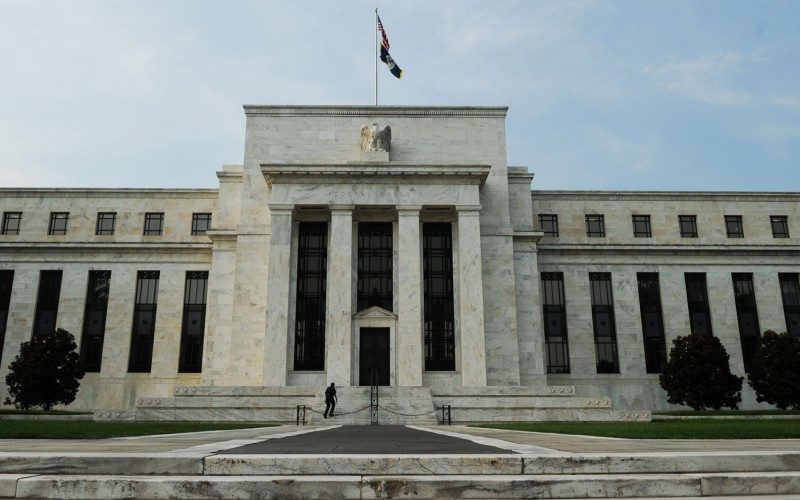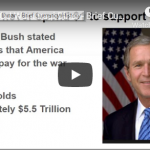The real reasons why the Fed will hike interest rates

For the past several months, the chorus of voices crying out over the prospect of a Federal Reserve interest rate hike have all been saying essentially the same thing – either they can’t do it, or they simply won’t do it. This is the same attitude the chorus projected during the initial prospects of a QE taper. Given the trends and evidence at hand I personally will have to take the same position on the rate hike as I did with the taper – they can do it, and they probably will do it before the year is over.
I suppose we may know more after the conclusion of the Fed meeting set for the 16th and 17th of this month. August retail sales data and industrial production numbers are due just before the meeting. However, I do not expect that they will have any bearing whatsoever on the interest rate theater. The Fed’s decision has already been made, probably months in advance.
The overall market consensus seems to be one of general confusion. The so-called experts cannot grasp why the Fed would even entertain the notion of a rate hike at this stage in the game. Hilariously, it is Paul Krugman who is saying what I have been saying for the past year when he states:
I really find it quite mysterious that the Fed is eager to raise rates given that, they’re going to be wrong one way or the other, we just don’t know which way. But the costs of being wrong in one direction are so much higher than the costs of being the other.
Yes, why does the Fed seem so eager? For the past few years no one has been asking for interest rates to increase. No one. Only recently has the Bank for International Settlements warned of market turmoil due to the long term saturation of markets caused by low interest policies, yet it was the BIS that had been championing low rates and easy money for years. The IMF has warned that a U.S. rate increase at this time would cause market crisis, yet the IMF has also been admonishing low rate policies, policies that they had also been originally supporting for years.
Confused yet? The investment world certainly seems to be. In fact, the overall market attitude towards a rate hike appears to be a heightened sense of terror, and I believe this has been amply reflected in stock behavior over the past three months. With thousands of points positive and negative spanned in only a couple of trading sessions, stock market indexes around the globe are beginning to behave like seizure victims, jerking and convulsing erratically.
This has, of course, all been blamed on China’s supposed economic “contagion.” But you can read why that is utter nonsense in my article“Economic crisis goes mainstream – What happens next?”
The bottom line is, the Federal Reserve has been the primary driver of the massive financial bubble now in place in most of the world’s markets, and much of this was accomplished through ZIRP (zero interest rate policy). Hopefully many of the readers here can recall the tens of trillions of dollars of overnight lending by the Fed to international banks and corporations that was exposed during the initial TARP (Troubled Asset Relief Program – aka bailout) audit. You know, the trillions in lending that mainstream naysayers claimed was not contributing to the overall debt picture of the U.S. Well, reality has shown that ZIRP and overnight lending has indeed directly and indirectly created debt bubbles in numerous areas.
The most vital of areas at this time is perhaps the debts accrued by major banks and companies that have relied on overnight loans to facilitate massive stock buybacks. It has been these buybacks that have artificially supported stocks for years, and whenever ZIRP was not enough, the Fed stepped in with yet another QE program to give particular indicators a boost. The main purpose of this strategy was to ensure that markets wouldnot reflect the real underlying instability of our economic system. The Fed has been pumping up banks and markets not only in the U.S., but across the globe.
Even with near zero interest, companies have still had to utilize a high percentage of profits in order to continue the stock buyback scam. We have finally arrived at a crossroads in which these companies will be forced to either stop buybacks altogether, or await another even more comprehensive stimulus infusion from the Fed. A rate increase of .25 percent might seem insignificant, until you realize that banks and companies have been cycling tens of trillions of dollars in ZIRP through their coffers and equities. At that level, a minor increase in borrowing costs swiftly accumulates into untenable debts. A rate increase will kill all overnight borrowing, it will kill stock buybacks, and thus, it will kill the stock market.
This is why so many analysts simply cannot fathom why the Fed would raise rates, and why many people fully expect the introduction of QE4. But we need to ask some fundamental questions here…
Again, as Krugman ponders (or doesn’t ponder, since I believe he is an elitist insider with full knowledge of what is about to happen), why does the Fed seem so eager to raise rates if the obvious result will be a drawn out market crash? Is it possible, just maybe, that the Fed does not want to prop up markets anymore? Is it possible that the Fed’s job is to destroy the American economy and the dollar, rather than protecting either? Is it possible that the Fed is just a useful tool, an institutionally glorified suicide bomber meant to explode itself in the most populated area it can find to cause maximum damage for effect? Wouldn’t this dynamic go a long way in explaining why the Fed has taken every single action it has taken since its underhanded inception in 1913?
Will the Fed raise rates this week? I still think the Fed may delay until December in order to give one more short term boost to the markets, but as I read the mainstream economic press I find the newest trend indicates I could be wrong. The trend I am speaking of has only launched in the past couple of days in the mainstream media, as outlets such as the Financial Times and CNN are now publishing arguments which claim a Fed rate hike is a “good thing”.
These arguments are in most cases predicated on completely fabricated notions of economic recovery. CNN states:
At a time when the U.S. economy is chugging along at over 2% growth and the unemployment rate reflects almost full employment, there’s not much of a case for the Fed’s key interest rate to remain at historic lows…
As I outlined in my series written at the beginning of this year titled “One last look at the real economy before it implodes,” any growth in gross domestic product (GDP) is a farce driven primarily by government debt spending and inflation in particular necessities rather than recovery in the core economy and on main street. And, unemployment numbers are the biggest statistical con-game of all, with more than 93 million Americans not counted on the Labor Department’s rolls as unemployed because they no longer qualify for benefits. Much of the mainstream has actually been asking the questions alternative analysts have been asking for years about the potential risks of returning market volatility and “recession” (which is actually an ongoing program of hyperstagflationary collapse). Yet, suddenly this week, MSM establishment mouthpieces are claiming “mission accomplished” in the battle for fiscal recovery and cheerleading for a rate hike?
What this tells me is that the narrative is being shifted and a rate hike is indeed on the way, perhaps even this week.
It is important to note that this stampede over the edge of the cliff is not only being triggered by the Federal Reserve. China is definitely part of the bigger problem, but only because China is working alongside international bankers to further their goal of total economic interdependence and centralization. China’s avid pursuit of SDR (special drawing rights) inclusion and its close relationship to the IMF and the BIS must be taken into account if one is to understand why the current fiscal crisis is developing the way it is.
China has recently announced it will be opening its onshore currency markets to foreign central banks, which essentially guarantees the inclusion of the yuan into the IMF’s SDR global currency basket by the middle of next year. The IMF’s decision to delay China’s inclusion until 2016 was clearly a calculated effort to make sure that they did not receive any blame for the current market meltdown; a meltdown that will accelerate to even more dangerous proportions as central banks begin to move away from the dollar as the world reserve and petro-currency.
In preparation for the global shift away from the dollar, China has begun dumping dollar denominated assets at historic levels while Chinese companies have begun reducing the amount of dollars they borrow for international transactions. Is this selloff designed to liquidate assets in order to support China’s ailing markets? No, no it is not.
China has been planning a decoupling from the U.S. dollar since at least 2005 when it introduced yuan denominated “Panda Bonds”, which at the time the media laughed at as some kind of novelty. Since then, China has slowly but surely spread yuan denominated instruments around the world. China, working with the BIS and IMF, have set the dollar up for an extreme devaluation and the U.S. Treasury has been set up for inevitable bankruptcy.
Will the Fed’s rate hike make U.S. bonds more desirable? Probably not. In the end, I believe the Fed rate hike will encourage more selling by the largest bond holders who will seek to make as much profit as possible until the bottom begins to fall out of the dollar. As China continues to sell off their treasury and dollar holdings, there will come a time when other global investors will feel forced to sell as well to avoid being the last idiot holding the bag when extreme devaluation takes place.
The Fed rate hike is a kind of openly engineered trigger event; one which will likely occur before the end of the year. The major globalist players within the BIS and IMF are separating themselves from this trigger as much as possible today, while warning of a coming crisis they helped to create.
The Fed seems to be a sacrificial appendage at this point, a martyr for the cause of globalization and centralization. Bringing down the U.S. and the dollar, or at least greatly diminishing the U.S. to third world status, has the potential to greatly benefit the Fabian socialists at the top of the pyramid. Such a crisis makes the idea of centralization and global economic administration a more enticing concept.
With a complex and bewildering system of interdependence causing social strife and chaos, why not just simplify everything with a global currency and perhaps even global governance? The elites will squeeze the collapse for all it’s worth if they can, and a Fed rate hike may be exactly what they need to begin the final descent.

















